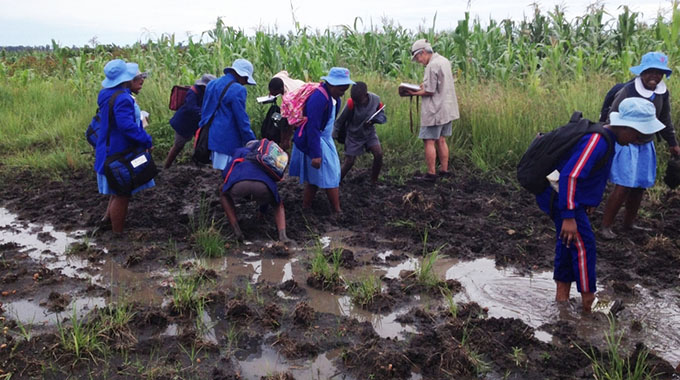February 2 is widely acknowledged as the World Wetland Day, to raise awareness of the importance of wetlands to the planet. This year marks the first time World Wetland Day is celebrated as an official United Nations international day.
The day also marks the date when an international convention on wetlands was adopted in Ramsar, Iran, in 1971.
The convention has 171 contracting parties who commit to designating wetlands of high value on a list of Wetlands of International Importance (Ramsar Sites), and to use all wetlands wisely and cooperate on transboundary issues.
Zimbabwe has been a party to the Ramsar Convention since 2013. However, the country’s wetlands are under serious threat from commercial activity, chiefly construction, agriculture and mining.
According to a draft government policy document, wetlands make up 3% of Zimbabwe’s total surface area, about 11 700 square kilometres. Of the available wetlands, 21% are classified as stable, 18 % are severely degraded and 61% moderately degraded. This excludes reservoirs, dams and impoundments that cover 652 151ha, as well as permanent
rivers and streams that cover over 5 700km .
What are wetlands?
The Ramsar Convention defines wetlands as “ecosystems where water is the primary factor controlling the environment and the associated plant and animal life.”
This covers all inland bodies such as marshes, ponds, lakes, fens, rivers, floodplains, and swamps; as well as a range of coastal bodies including saltwater marshes, estuaries, mangroves, lagoons, and coral reefs. Also included are human-made wetlands like fishponds, rice paddies, and salt pans.
Global inland and coastal wetlands cover over 12.1 million square kilometres, an area larger than Canada.
Why are wetlands important?
According to the United Nations Development Programme, wetlands have numerous environmental, economic and social roles such as removing pollutants, serving as wildlife habitats, acting as groundwater recharge systems as well as capturing and storing atmospheric carbon dioxide. The latter function is an important climate change mitigation function as wetlands remove carbon dioxide from the atmosphere, allowing it to be converted into other carbon compounds and cellulose.
Globally, wetlands are estimated to be storing 500–700 gigatonnes of carbon. The disturbance of wetlands will, therefore, result in the release of carbon dioxide, methane and nitrous oxide, three major heat-trapping gases, into the atmosphere.
Wetlands also abate the effects of climate change events such as droughts and floods. During droughts, wetlands naturally regulate the quantity and timing of water discharge. In times of floods, wetlands act as buffers and flood storage systems.
Zimbabwe’s major wetlands
In line with its Ramsar Convention commitments, Zimbabwe has identified 7 sites as major national wetlands. These are:
| Name | District |
| Lake Chivero | Zvimba |
| Cleveland Dam | Harare |
| Middle Zambezi / Mana Pools | Hurungwe |
| Victoria Falls National Park | Hwange |
| Chinhoyi Caves | Makonde |
| Driefontein Grasslands | Gutu, Chikomba, Chirumhanzu |
| Monavale Vlei | Harare |
In total, these sites cover 453,828 hectares and are protected by several pieces of legislation, including the Constitution, Environmental Management Act and several regulations.
Do you want to use our content? Click Here












